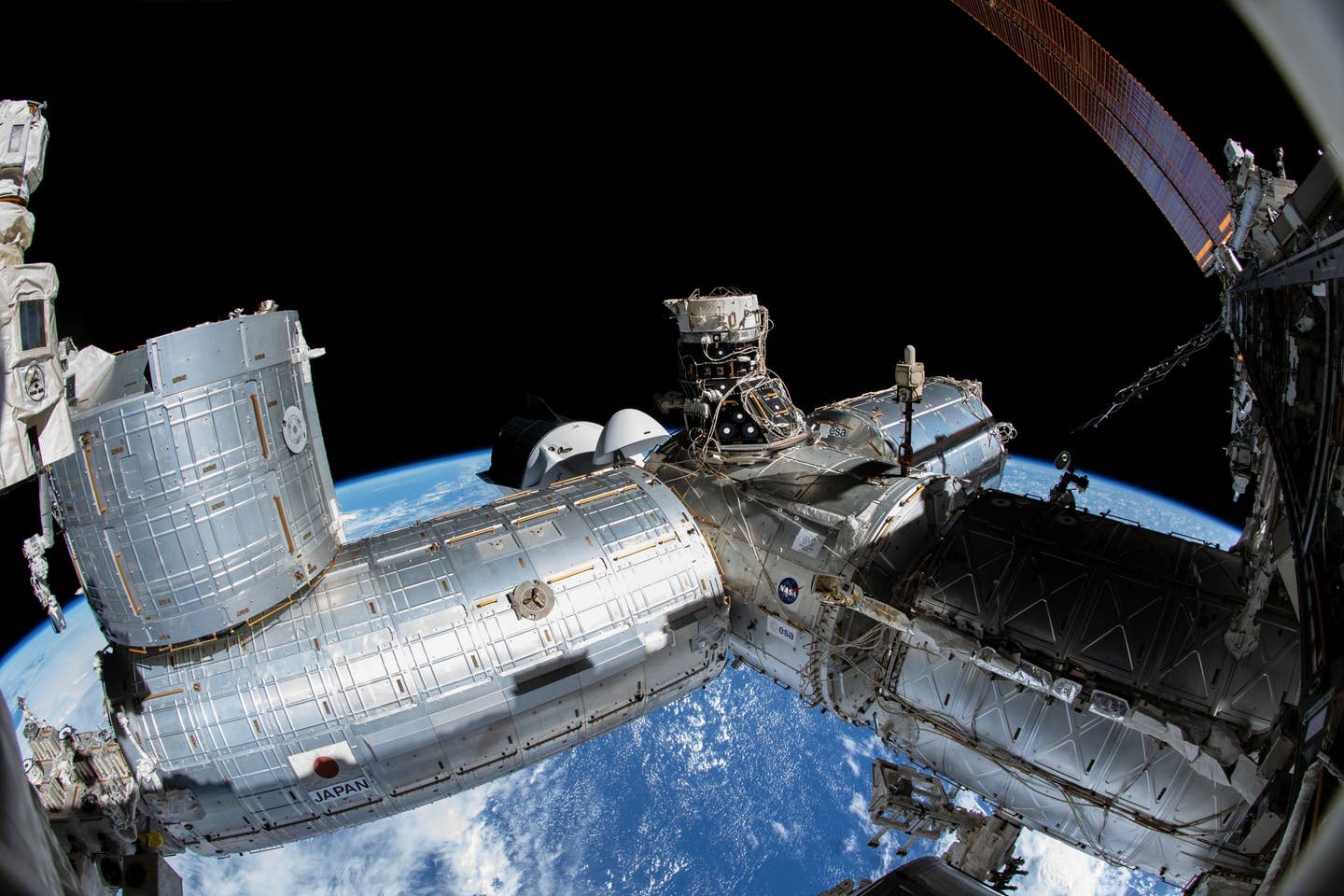Space Force: Less Than a Decade Left to Win Space Race with China
When it comes to building up capabilities in space, China is outpacing the U.S., top military officials warn.

A portion of the International Space Station’s U.S. segment. [Courtesy: NASA]
When it comes to building up capabilities in space, China is outpacing the U.S., top military officials warn.
“We are absolutely in a strategic competition with China and space is a part of that,” General David D. Thompson, vice chief of space operations for the U.S. Space Force, said at the Reagan National Defense Forum held over the weekend at the Ronald Reagan Presidential Library in Simi Valley, California.
The Space Force is looking to industry to spearhead innovation, and without changes in technology development, China could overtake the U.S. in less than a decade and become the dominant space power, Thompson said.
“The fact, that in essence, on average, they are building and fielding and updating their space capabilities at twice the rate we are means that very soon, if we don’t start accelerating our development and delivery capabilities, they will exceed us,” Thompson said during a panel discussion.
“[The year] 2030 is not an unreasonable estimate of the point in which that could occur,” he added.
Thompson’s somber warning echoed that issued by the top U.S. defense official, who said China’s desire to best the U.S. military isn’t confined to space.
China, which has spent the past two decades conducting “breakneck modernization” of its military, is the U.S. military’s “pacing challenge,” Defense Secretary Lloyd Austin said in a speech at the event.
“We are absolutely in a strategic competition with China and space is a part of that.”
General David D. Thompson, vice chief of space operations, U.S. Space Force
“China’s military is on pace to become a peer competitor to the United States in Asia—and, eventually, around the world,” Austin said. “China’s leaders are expanding their ability to project force and to establish a global network of military bases. Meanwhile, the [People’s Liberation Army] PLA is rapidly improving many of its capabilities, including strike, air, missile-defense, and anti-submarine measures. And it’s increasingly focused on integrating its information, cyber, and space operations.”
Days before, Austin said China’s pursuit of hypersonic weapons “increases tensions in the region,” the Associated Press reported.
In late October, U.S. military officials confirmed that China conducted a hypersonic weapons test during the summer, indicating it is pursuing an Earth-orbiting system to evade U.S. missile defense, Reuters reported.
Unlike ballistic missiles, which have a known path, hypersonic missiles can travel nearly 4,000 mph and orbit the Earth before descending on a target.
It’s a threat that requires constant vigilance, Thompson said.
“They’re always moving, they’re always maneuvering. You have to watch it continuously to decide if it’s going to be a problem or threat,” he said. “It’s no longer, ‘OK, I see it, I capture it, I understand where it’s going. I don’t need to worry about it.’ Now I have to watch it the whole time, it can change course, and up until the very last minute, I don’t know if it’s going to be a threat.”
It’s a potential threat the U.S. is not presently equipped to handle, Thompson said.
“We don’t have good defenses today, but in the past when we’ve had these challenges, we’ve built defenses,” he said. “We can do it again.”
“We’re in a race for military superiority, largely through technology,” U.S. Air Force Secretary Frank Kendall told CNBC while at the forum. “China has observed, going back to the Gulf War 30 years ago, how we project power and what we rely upon to do that,” he said.
“They’ve been building systems that are increasingly capable over a long time now, trying to target those assets of the United States,” Kendall said. “We have to respond. We’re in a race in that sense.”

Subscribe to Our Newsletter
Get the latest FLYING stories delivered directly to your inbox






